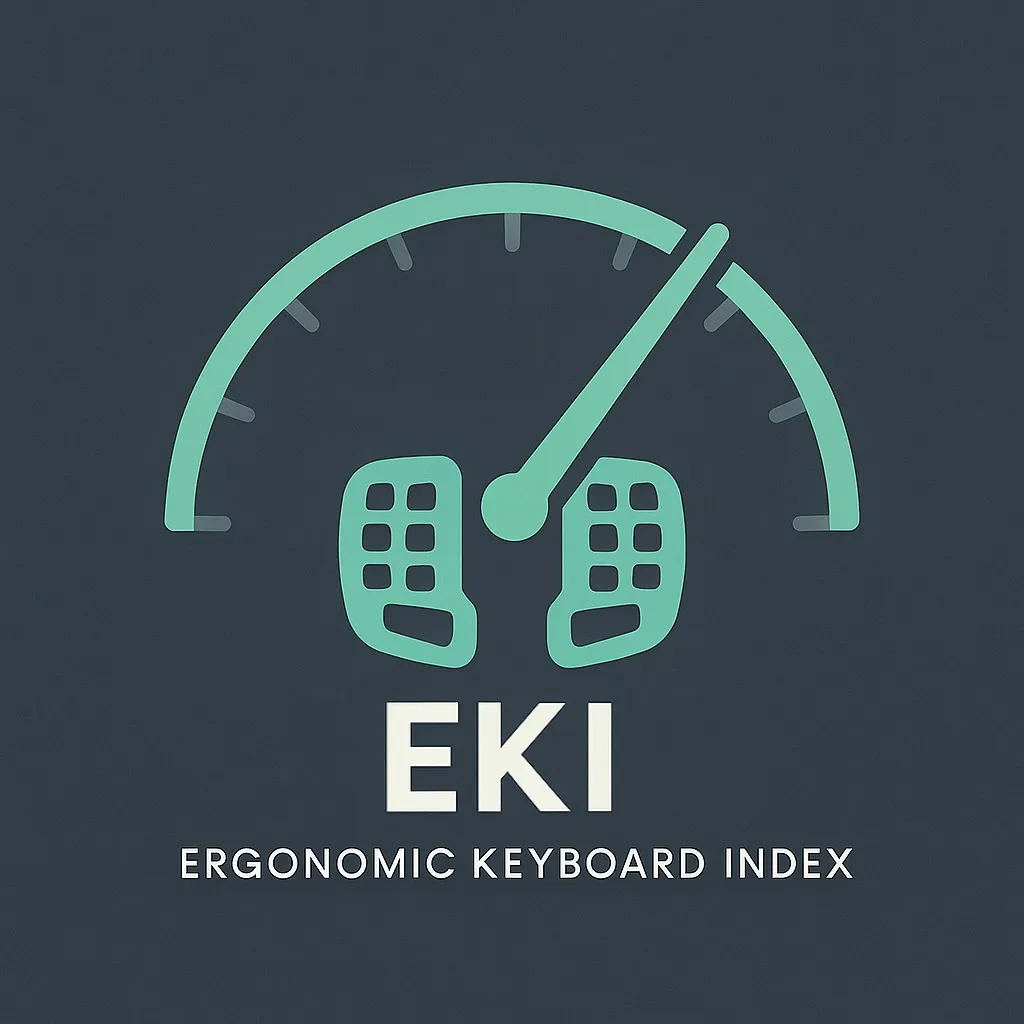When exploring ergonomic keyboards, one of the hardest parts is figuring out how good a keyboard really is. Some boards are split, some are columnar, some are portable - but until now, there hasn’t been a simple way to capture all of those features in a single score.
That’s why I created the Ergonomic Keyboard Index (EKI): a clear, 20-point scale that measures how ergonomic, practical, and buildable a keyboard is. Instead of long spec sheets or scattered impressions, the EKI gives you a single number that shows at a glance how well a keyboard supports comfort and usability.
From now on, every time I publish a keyboard review, I’ll assign it an EKI score. I’ll also maintain a dedicated comparison page, linked here EKI - where all reviewed keyboards are gathered in one place, sorted and easy to compare. Think of it as a living reference: whenever a new review goes live, the comparison page will be updated with the latest scores.
My goal is simple: to make it easier for you (and me) to quickly answer the question: “How ergonomic and good is this keyboard, really?”
Ergonomic Keyboard Index
The Ergonomic Keyboard Index (EKI) is a scoring system (0–20 points) that helps compare ergonomic keyboards based on comfort, portability, and buildability.
A higher score means the keyboard offers more ergonomic benefits and practical usability.
Core Ergonomics (max 12 points)
These features have the biggest impact on long-term comfort and health.
Programmability (0–1)
- Fully programmable (1)
- Limited layers only (0.5)
- Not programmable (0)
Palm Stability (0–2)
- All keys accessible without palm movement (2)
- Partly (1)
- No (0)
Columnar Layout (0–2)
- Full columnar (2)
- Partial stagger improvement (1)
- Standard stagger (0)
Column Staggering Quality (0–1)
- Natural stagger tuned to finger lengths (1)
- None (0)
Concavity (0–1)
- Deep concavity (1)
- Flat (0)
Thumb Wells (0–1)
- Strong thumb cluster (1)
- None (0)
Split Design (0–2)
- True split with adjustable angle/width (2)
- Semi-split (1)
- Fixed/not split (0)
Tenting Support (0–1)
- Adjustable tenting (1)
- Fixed tenting (0.5)
- Flat (0)
Switch Profile (0–1)
- High-profile mechanical (1)
- Laptop flat (0)
Practicality & Portability (max 5 points)
Ergonomics matter most at the desk, but portability and adaptability make a board more useful in everyday life.
Compactness (0–2)
- Very compact but still ergonomic (2)
- Moderate (1)
- Large/bulky (0)
Portability / Backpack Readiness (0–1)
- Can carry safely without a case (1)
- Requires case or fragile (0)
Wrist-Rest Independence (0–1)
- Comfortable typing without wrist rests (1)
- Needs wrist rests (0)
Hot-Swap Switch Support (0–1)
- Hot-swap supported (1)
- Solder-only (0)
Buildability (max 3 points)
For DIY and repair enthusiasts: how easy is the keyboard to build or maintain?
- Through-Hole PCB (3) – Beginner-friendly DIY; large pads, easy to solder/fix
- SMD PCB (2) – Harder to solder, but still possible with good tools
- Handwired (1) – Possible but time-consuming; high effort for DIY
- Prebuilt Only (0) – No build option available
